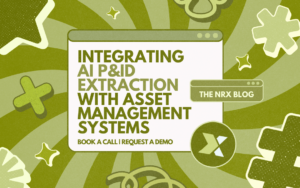
Moving Through the AI Hierarchy
The AI hierarchy progresses step by step. First, automation handles routine tasks like scheduling or generating work orders. These simple wins demonstrate value early and help organizations secure buy-in for larger digital initiatives. Next, predictive analytics interprets patterns and identifies failures before they occur. Finally, prescriptive logic recommends actions that balance risk and performance. Organizations that climb the hierarchy gradually gain more resilient maintenance practices.
Unlocking Predictive Benefits
Predictive maintenance changes the game. Instead of waiting for equipment to break, teams act when conditions demand it. Research shows that well-run predictive programs deliver 10 times ROI and 35% to 45% less downtime. These figures are significant as they directly translate into fewer disruptions but higher production throughout. In addition, McKinsey found predictive strategies reduce maintenance costs by 10 to 40%, showing clear financial gains. These results prove predictive maintenance is not just efficient but is profitable.

Driving Efficiency with Automation
Modern CMMS solutions bring automation into everyday workflows. They support natural language search and provide intelligent recommendations. As a result, technicians save time and avoid errors. In fact, predictive maintenance strategies have been shown to cut breakdowns by as much as 70% to 75%, which significantly reduces emergency repairs. This explains that reducing emergencies doesn’t just save money, but it improves safety and helps retain skilled workers. Additionally, automation standardizes processes across sites, ensuring consistent performance even when teams or contractors vary in experience.
Boosting Technician Productivity
AI-driven scheduling boosts technician efficiency. Teams shift from fixing failures to completing planned work. AI has become central to workforce strategy. When work is predictable and properly supported, technicians become more engaged, and management gains visibility into true resource needs.
Conclusion
The AI hierarchy provides a roadmap for the future of maintenance. By starting with reliable data and advancing into predictive intelligence, organizations achieve measurable gains in cost control and workforce productivity. Intelligent CMMS proves the future of maintenance is already here, and it is delivering results today.
Integrating AI P&ID Extraction with Asset Management Systems

ISO 14224 vs Other Maintenance Standards: What Sets It Apart?

Building Trust in Your Asset Data: Strategies for Governance

Share this article

